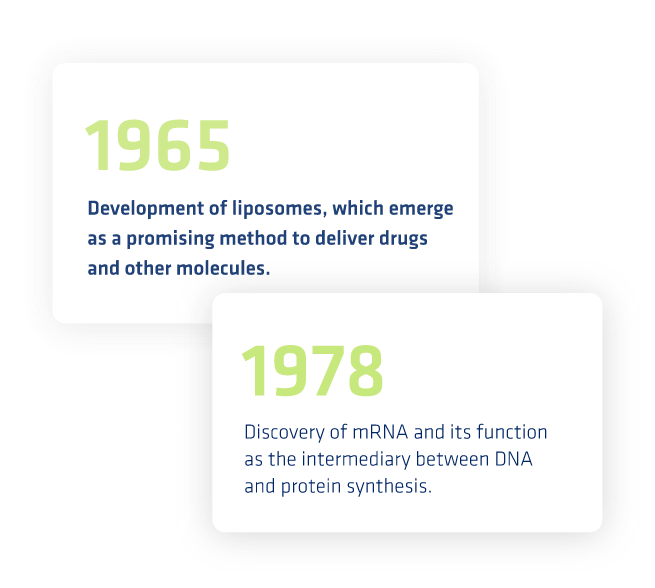Let's collaborate and create quality liposome encapsulated drugs together. Contact Us!
Lipid-based delivery systems can be carriers for a wide range of drug substances, including nucleic acids, small molecules (both hydrophilic and hydrophobic), peptides, and proteins.
The surface of liposomes and lipid nanoparticles can be modified with various molecules to facilitate targeting and enhance the therapeutic effect of the encapsulated drug.By encapsulating drugs, liposomes and LNPs can also facilitate targeted drug delivery to specific cells or tissues, enhancing their efficacy while minimizing adverse effects. Therefore, incorporating liposomes and LNPs into drug delivery systems is a promising strategy for optimizing drug therapy. They can also enable targeted drug delivery by attachment of antibodies (or their fragments), aptamers, peptides or any other ligands to their Surface that selectively bind to receptors on specific cells or tissues.
Liposomes and lipid nanoparticles are versatile drug delivery systems that offer several advantages over conventional drug formulations.
Liposomes are spherical vesicles composed of a lipid bilayer that can encapsulate both hydrophilic and hydrophobic drugs. Lipid nanoparticles, including solid lipid nanoparticles and nanostructured lipid carriers, are solid or semisolid particles composed of a lipid matrix that can also encapsulate a wide range of drugs. Liposomes and lipid nanoparticles (LNPs) play a crucial role in improving the pharmacokinetic and pharmacodynamic properties of drugs. These delivery systems protect drugs from degradation, enhance their solubility, and increase their bioavailability.

The history of lipid nanoparticle (LNP) research and development is characterized by continuous innovation and the pursuit of more effective drug delivery systems. Since the development of liposomes in 1965, researchers have been working on refining and expanding the applications of these lipid-based delivery systems. The 1978 development of liposome-mRNA formulations marked a pivotal moment in the intersection of RNA-based medicine and lipid-based delivery systems.
Over the years, various LNPs encapsulating different drugs have been approved by the FDA, and the use of LNP delivery systems for mRNA vaccines in 2020 showcased their potential to revolutionize medicine. SyVento BioTech builds on this legacy, actively shaping the landscape by developing cutting-edge lipid-based delivery systems that enable the safe and effective delivery of RNA-based therapeutics.
The developed formations are tested in accordance with the QbD (Quality by Design) and ICH guidelines.
As a biotechnology company, we offer contract development and production services that leverage our deep expertise and state-of-the-art facility.
Our team of experienced scientists and engineers work closely with our clients to develop customized solutions that meet their unique needs.
Partnering with SyVento BioTech gives you access to the latest industry developments and regulatory compliance, all while delivering innovative platform solutions that exceed your expectations.
and unlock the potential of lipid-based nanocarrier technology.
Increase in efficacy and therapeutic index
Act as Scaffold for additional agents
Possibility of several routes of administration (both inhalator and intravenous)
Increases half life of drug
Biodegradable, bio-compatible & non-immunogenic
Can be made into variety of sizes
Reduced dosage
Reduces systemic toxicity of drug
(eg. Taxol, Amphotericin B)
Protect encapsulated drug from metabolic digestion
Can be targeted to specific tissues or cells
Can carry both lipid & water soluble drugs
Improved pharmacokinetic perfomance
Can be used as sustained drug release
Amphiphilic
It helps in reducing the exposure of sensitive tissues to toxic drugs
(unmodified Liposomes
gather in specific
tissues like
reticuloendothelial system)
Yadav D, Sandeep K, Pandey D, Dutta RK (2017) Liposomes for Drug Delivery. J Biotechnol Biomater 7: 276. DOI: 10.4172/2155-952X.1000276
Our team at SyVento BioTech possesses extensive qualifications and experience, enabling us to expertly develop lipid-based delivery systems, specifically focusing on LNP technology, which fosters essential outcomes like improved efficacy and enhanced support for diverse applications. Our LNP delivery systems: